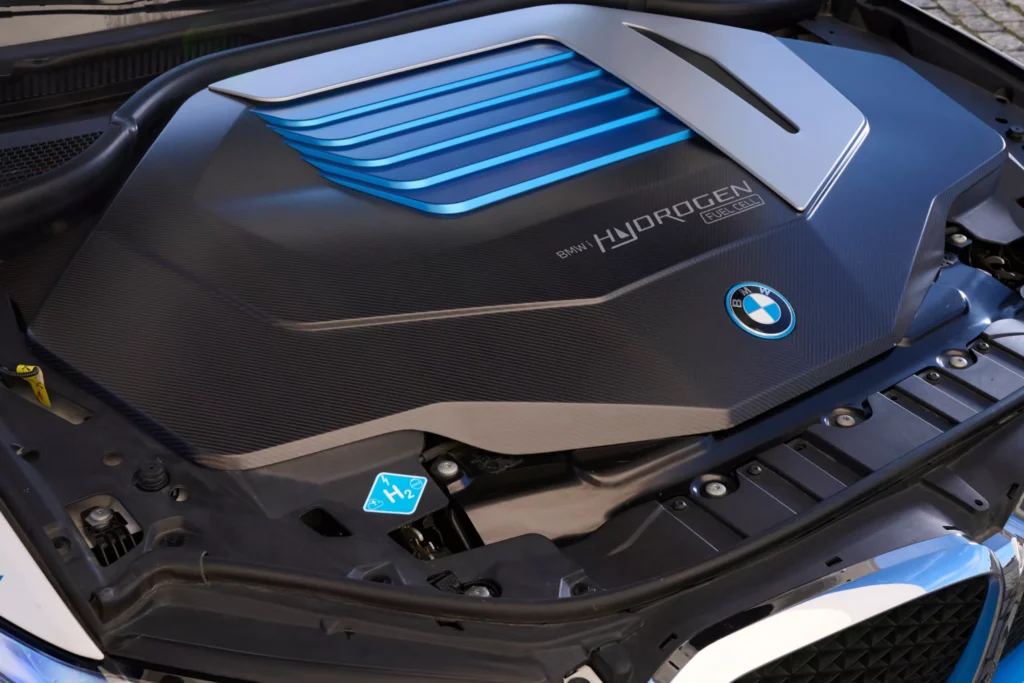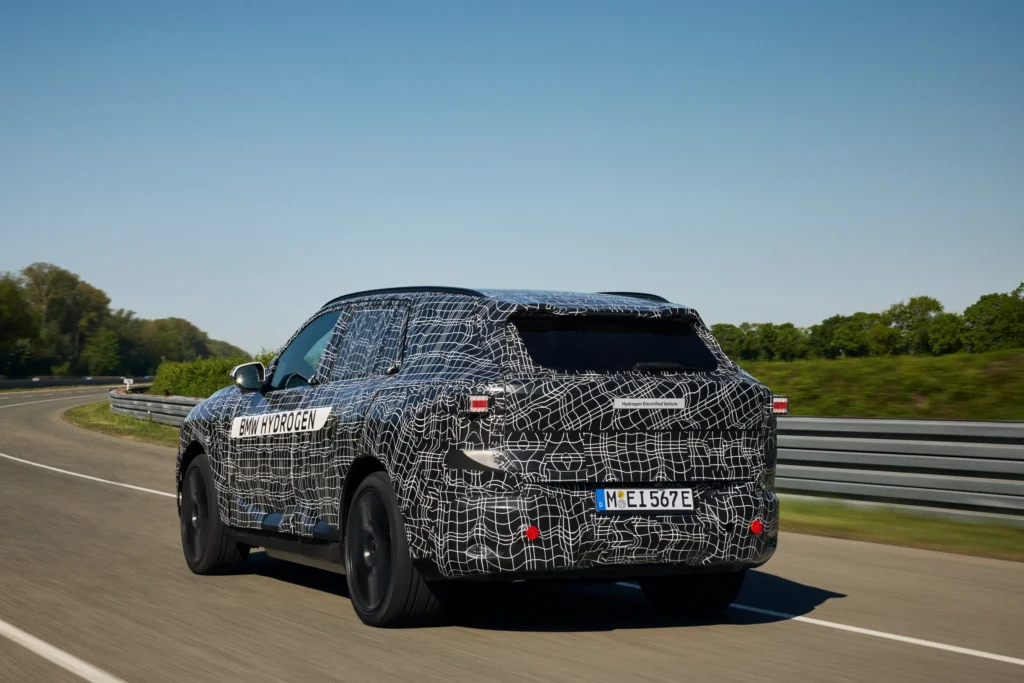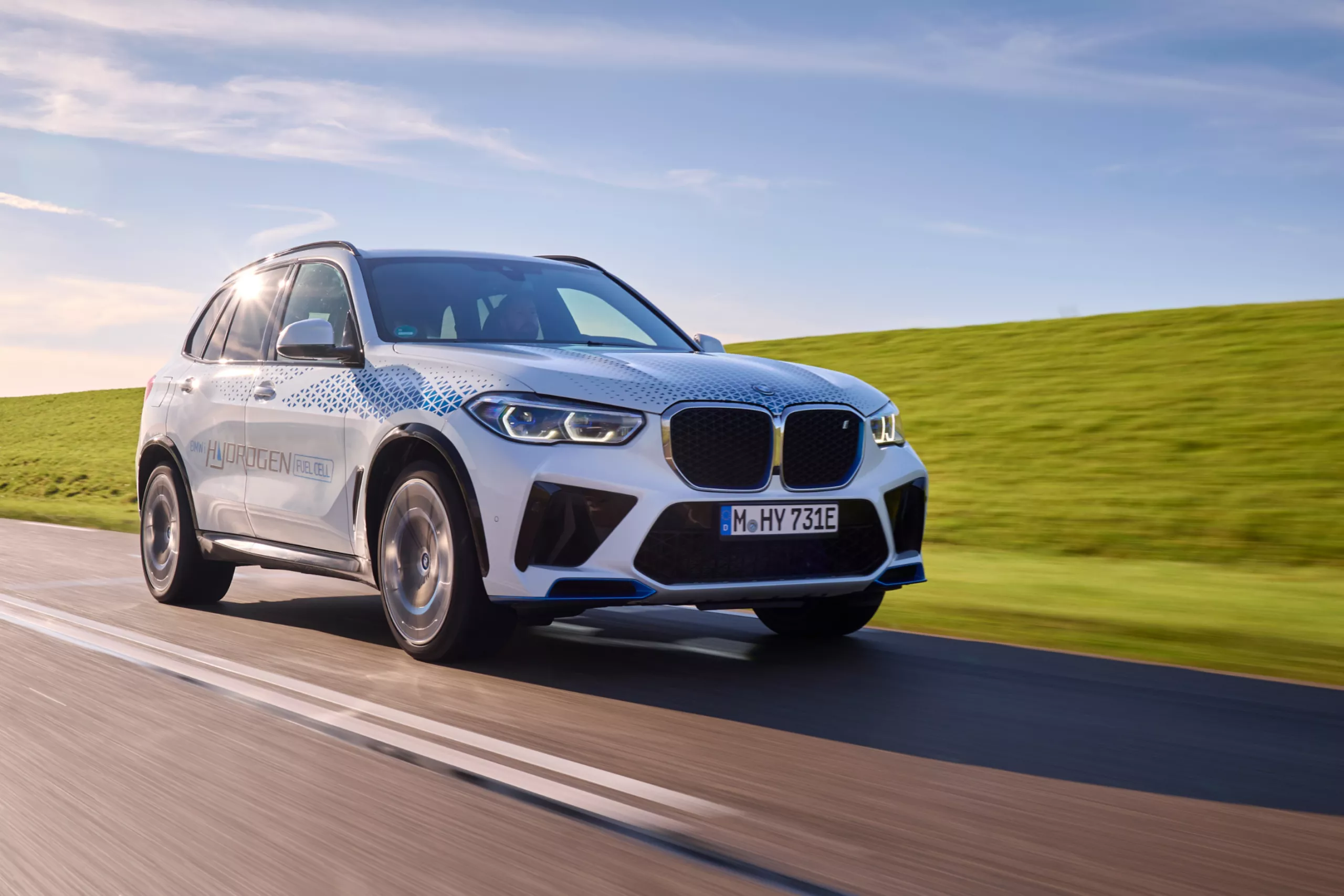The automotive industry is about to witness a historic milestone. BMW has officially announced the launch of its first hydrogen-powered mass-production vehicle in 2028, positioning itself as a pioneer in the premium fuel-cell vehicle market. This strategic decision represents a calculated commitment to the complementarity of different sustainable mobility technologies.
The announcement comes as the energy transition demands multiple solutions tailored to different needs. While battery-electric vehicles dominate discussions on sustainable mobility, hydrogen emerges as a promising alternative for applications requiring extended range and rapid refueling.
The technological revolution of the BMW iX5 Hydrogen
The heart of the strategy lies in the third-generation fuel cell system, developed in partnership with Toyota since 2011 and expanded in 2024. This collaboration combines Japanese expertise in individual cells with German systemic integration capabilities.
The new system is 25% more compact than the current version, maintaining 401 hp (295 kW) of power with greater energy density. The specifications demonstrate commercial maturity: a range of 504 km (314 miles) (WLTP), 0-100 km/h (0-62 mph) in under 6 seconds, and refueling in 3-4 minutes. The 700-bar tanks hold 6 kg of hydrogen, resulting in a fuel consumption of 1.19 kg/100 km.

Production infrastructure: Steyr as a center of excellence
The Steyr plant in Austria was chosen as the production center for the fuel cell systems. This facility already produces over a million conventional engines annually with 4,700 employees, offering expertise accumulated over decades of propulsion system development.
The distributed center strategy optimizes resources: Munich develops prototypes, Landshut produces essential components such as the BMW Energy Master, and Dingolfing manufactures hydrogen-specific prototypes. The investment in specialized equipment reflects a commitment to mass production.
Market context: Paradoxes and potential
The global market presents an interesting paradox. Projections indicate growth from USD 1.9 billion (2025) to USD 21.2 billion (2035) – a CAGR of 27.2%. However, current sales are modest: only 4,102 units globally in the first half of 2025, a 27% year-over-year decline.
Hyundai leads with the Nexo SUV (1,252 vehicles), followed by Toyota with the Mirai and Crown FCEV (698 units). The numbers reveal a developing market with significant potential for expansion.
Infrastructure is the main bottleneck. There are only 921 stations globally, concentrated in China and Germany. In Europe, H2 MOBILITY is consolidating its network, prioritizing high-capacity commercial facilities over geographic capillarity.
European plan: Ambitions and realities
The European Union has set ambitious goals. The European Hydrogen Backbone initiative aims to create a 58,000-km network by 2040, leveraging 60% of existing gas infrastructure. Currently, Europe has only 1,564 km in operation.
Regulations mandate stations every 200 km on major highways by 2031, with a target of 20 million tons of hydrogen by 2030. Current prices vary: €12.85/kg in Germany, €9-11/kg in France, with a projection of €4.70/kg for renewable hydrogen in the long term.

Technological complementarity strategy
BMW's "technology-open" approach differs from single-technology strategies. The BMW X5 will offer five options: gasoline, diesel, plug-in hybrid, battery-electric, and fuel cell. This diversification recognizes that different technologies are optimal for different contexts.
Hydrogen finds its advantage in long-distance applications, where rapid refueling and extended range overcome the limitations of battery-powered electric vehicles. BMW positions hydrogen as "the missing piece of the electric mobility puzzle," complementing conventional electric systems.
Strategic impact on the industry
A commitment to mass production can catalyze supply chain transformations. As the first premium automaker to offer a fuel cell in mass production, BMW sets an important precedent.
Economies of scale can substantially reduce costs. Currently, hydrogen stations cost USD 12 million versus USD 200,000 for gasoline or fast electric charging. Commercial viability could spur investment in infrastructure and more cost-effective solutions.
The signal to the market is significant. The announcement demonstrates confidence in the technological viability, potentially encouraging other manufacturers to intensify their own programs. This dynamic can accelerate technological maturation and create a virtuous cycle of innovation.
Future prospects
The 2028 launch represents a crucial test of commercial viability in the premium segment. Success depends on the convergence of several factors: infrastructure development, cost reduction, consumer acceptance, and favorable government policies.
BMW has not yet confirmed the initial markets, indicating that availability will depend on local infrastructure. Involvement in the HyMoS initiative, starting in Germany and France, suggests a gradual and pragmatic approach.
The strategy reflects a mature understanding of the energy transition as a multifaceted process. Hydrogen, with its advantages in rapid refueling and extended range, could find a specific niche in the sustainable mobility ecosystem.
For BMW, it represents an opportunity for competitive differentiation and technological leadership in an emerging segment. Success could redefine premium market expectations and establish a new standard for technological diversification for different future scenarios.

